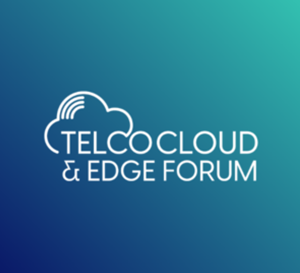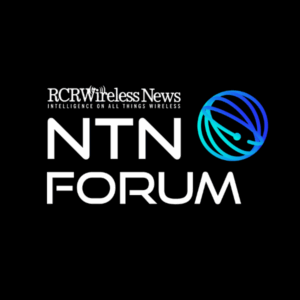NEW ORLEANS – Sprint Nextel has been hammered from all sides for poor decision making in the past, but you have to give this beleaguered carrier credit for at least attempting to right some of those questionable turns. More impressively – or foolishly – they are attempting most of those changes in one fell swoop.
At this year’s CTIA event in New Orleans, Sprint Nextel network executives provided an update on those plans, which include rolling out LTE services across a pair of spectrum bands; updating its legacy CDMA-based 3G network for greater efficiency as well as expanding its scope to its 800 MHz spectrum assets; de-commissioning its legacy iDEN network that will free up those precious 800 MHz channels; and diverting consumer attention away from its WiMAX-based “4G” offering and towards its new LTE-based “4G” offering.
Have much on your plate?
This week’s update mirrored those provided by the carrier last month at an event put on for select media at its Overland Park, Kan., campus, with a few updates.
Bob Azzi, SVP of networks at Sprint Nextel, noted that the carrier’s initial plans to roll out CDMA2000 1x-Advanced voice capabilities would encompass a single voice carrier in its 800 MHz spectrum band covering about 80% of its market. That move should help the carrier expand voice coverage both geographically as well as in-building penetration that in turn will help reduce roaming expenses.
In the 2013 to 2014 time frame, and pending Federal Communications Commission approval, the carrier is also planning on installing LTE capabilities in its 800 MHz band.
Both of these moves will be made possible by freeing up current 800 MHz channels currently serving its iDEN network that the carrier is actively thinning with plans for full shut down in a couple of years. For those customers married to that network’s push-to-talk functionality, the carrier is installing an updated Sprint Direct Connect service that it claims is vastly superior to previous CDMA-based offerings and on par with its current iDEN service.
Sprint Nextel also refuted claims by some of its larger rivals that its current LTE plans that involve rolling out services using a total of 10 megahertz of spectrum in the 1.9 GHz band will fail to match current offerings that rely on up to twice as much spectrum. Azzi noted that while current LTE deployments are simply carriers touching only a portion of their base stations to install the LTE equipment, Sprint Nextel would touch every one of its cell sites to install all new equipment that would enhance both coverage and capacity for both its legacy CDMA network and new LTE offering.
“This dog will hunt,” Azzi snared.
Iyad Tarazi, VP of network development and engineering at Sprint Nextel, claimed that while peak, theoretical speeds might not match those of its larger rivals, customers will see speeds and network quality on par with current offerings.
Tarazi also noted that the carrier was still working on a Voice over LTE service for its soon-to-launch LTE service, while its current 1x-Advanced service would benefit from the inclusion of HD Voice capabilities designed to enhance voice quality.
In a blow to the growing distributed antenna system market, Tarazi also said that Sprint Nextel would be moving away from current DAS deployments in favor of femtocell and picocell solutions for its LTE network. Tarazi explained that the carrier was looking at a fourth quarter launch for a new femtocell product focused on public buildings, with a late 2013 plan to roll out an outdoor picocell solution that would help facilitate offloading of data traffic from its macro network.
Tarazi did note that the carrier was interested in using Wi-Fi as an offloading option, though the carrier did not have any interest in running that infrastructure. Also helping to fulfill the carrier’s network “offloading” plans is its relationship with Clearwire that will see its partner begin deploying TD-LTE services using its 2.5 GHz spectrum beginning in 2013. Sprint Nextel is looking at that service as a way to provide capacity in dense areas that might overwhelm its more spectrally limited LTE deployment plans.
As for continued expansion of its LTE network, Azzi said the carrier was indeed looking at potential partnerships with rural operators, but that the structure of those sort of deals still needed to be worked out.
Analysts acknowledge the challenge Sprint Nextel is facing with its Network Vision plans, but note that the carrier will have its work cut out in trying to maintain “4G” momentum.
“Sprint is suffering as a result of two decisions made in the past – the poorly conceived and executed merger with Nextel, and the short-sighted choice of WiMAX as a 4G technology,” explained Sundev Johal from Ovum. “On the other hand, Sprint’s strategy and plan for this transition is impressive. It is moving very rapidly to execute on this plan, and progress to date has been quick and effective. However, the risk of such a rapid rollout is that there will be problems post-launch, as we have already seen with Verizon Wireless, so we will have to wait until after launch to see how the network fares.”
As for its WiMAX history, Johal said that while that decision did give the carrier a head start in the “4G” race, any advantage gain will have evaporated with its LTE plans as the carrier is now seen as coming to market years after its larger rivals.
“There will be significant risks in terms of customer confusion as Sprint has to educate customers on the new meaning of 4G as it moves from WiMAX to LTE, and Sprint’s early mover advantage on 4G will be eroded entirely as this happens,” Johal added.
Sprint Nextel is not entirely retiring its WiMAX efforts as the carrier announced this week that it will begin offering the service across its prepaid Virgin Mobile USA and Boost Mobile outlets.
Bored? Why not follow me on Twitter?






